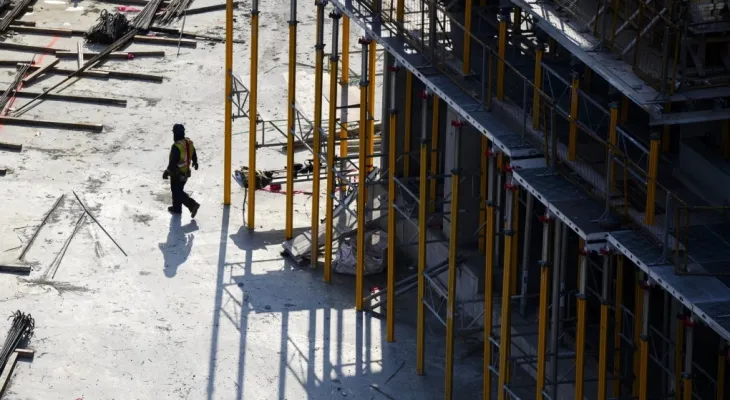Search here
Newspaper
Search here

Arab Canada News
News

Published: January 11, 2024
Internal documents have revealed that federal public service employees warned the government two years ago that large increases in immigration could affect the affordability of housing and services.
Documents obtained by the Canadian Press through an access to information request show that Immigration, Refugees and Citizenship Canada conducted an analysis of the potential impacts of immigration on the economy, housing, and services, as it prepared its immigration targets for the period from 2023 to 2025.
The deputy minister, among others, was warned in 2022 that housing construction has not kept pace with population growth, and one of the slides states: "In Canada, population growth has outpaced growth in available housing units."
"As the federal authority responsible for managing immigration, policymakers at IRCC must understand the imbalance between population growth and housing supply, and how permanent and temporary immigration affect population growth."
Immigration accounts for nearly all of the population growth in Canada, given the country’s advanced age demographic.
The federal government ultimately decided to increase the number of permanent residents Canada welcomes each year to 500,000 by 2025, a decision that attracted significant attention and scrutiny, meaning that in 2025, Canada will welcome nearly twice as many permanent residents as it did in 2015.
The document reveals that federal public service employees were well aware of the pressures that high population growth could place on housing and services.
Public sector employees warned that rapid increases put pressure on healthcare and affordable housing, and settlement and resettlement service providers face short-term pressures due to labor market conditions, increased levels, and Afghanistan and Ukraine initiatives.
The affordability of housing has now become a political responsibility for the Liberal government, and the Conservative Party has gained significant momentum over the past year as it seized upon affordability issues, particularly avoiding the immigration issue. These pressures have forced the Liberal government to refocus its efforts on housing policy and begin addressing the sharp rise in international students with new rules.
Recent data show that the pace of population growth in Canada continues to reach record numbers, with the country also bringing in a historic number of temporary residents, largely through international student programs and temporary foreign workers.
The country's population grew by more than 430,000 in the third quarter of 2023, marking the fastest rate of population growth in any quarter since 1957.
Experts from Bay Street to academic institutions have warned that strong population growth in Canada is eroding housing affordability as demand outstrips supply.
The Bank of Canada has provided a similar analysis; Deputy Governor Tony Gravelle gave a speech in December warning that strong population growth is pushing rents and home prices higher.
Public opinion polls also show that Canadians are increasingly concerned about the pressure immigration places on services, infrastructure, and housing, leading to declining support for high immigration rates.
The Liberal government has defended its immigration policies, arguing that immigrants help achieve economic prosperity and improve the country’s demographic composition as the population ages.
However, amid increased scrutiny of the Liberal government's immigration policy, Immigration Minister Marc Miller set the annual target at 500,000 permanent residents for 2026.
Documents from 2022 indicate that Canada’s immigration targets exceeded the recommendations of some experts, including the Century Initiative, an organization that advocates for increasing the country's population to 100 million by the end of the century.
However, attention is now shifting from these targets to the sharp rise in the number of temporary residents. Between July and October, about three-quarters of Canada’s population growth came from temporary residents, including international students and temporary foreign workers.
This trend raises alarms about an increased reliance by businesses on low-wage migrant workers and the lure of international students to dubious post-secondary institutions.
Mikal Skuterud, an economics professor at the University of Waterloo specializing in immigration policy, says the federal government seems to have "lost control" over temporary immigration flows.
Unlike annual targets for permanent residents, the number of temporary residents is determined by demand from migrant workers and international students.
He also points to a connection between permanent resident targets and the flow of temporary residents.
He stated: "To the extent the permanent numbers increase, and immigrants realize that the way to get permanent residency is to come here as a temporary resident ... immigrants are incentivized to come and try their luck."
Skuterud, who has been an outspoken critic of the federal government’s immigration policy, affirmed that the benefits of high immigration have been overstated by the Liberals.
He said that starting from around 2015, when the Liberal government was first elected, a narrative developed in Canada that "immigration was kind of the solution to Canada’s economic growth problems."
While the professor says this narrative is what people like to believe, he points out that higher immigration rates do not do much when it comes to raising living standards, measured by real GDP per capita.
The released documents indicate that IRCC public servants agree.
Public sector employees noted that "an increase in working-age population can have a positive impact on GDP, but its effect on GDP per capita is minimal."
Comments